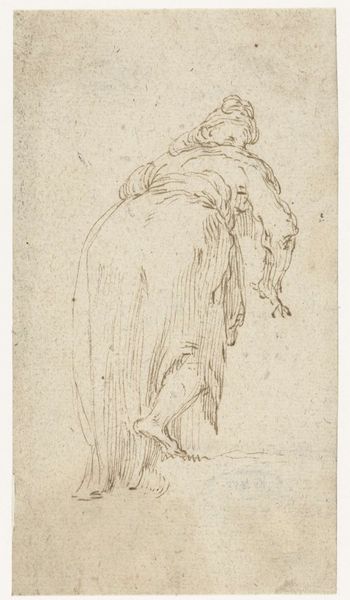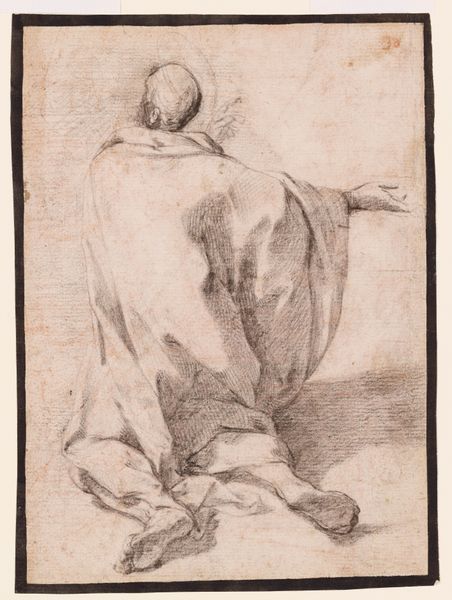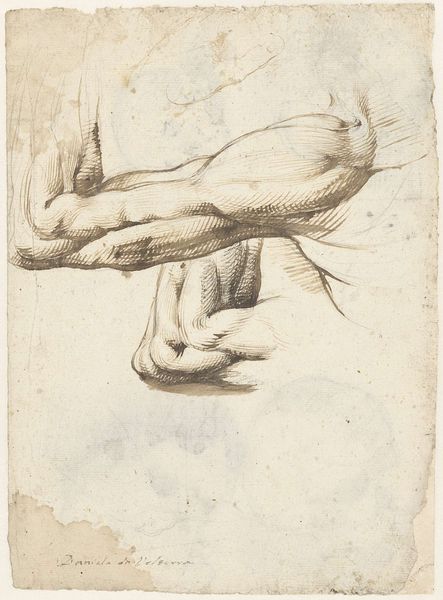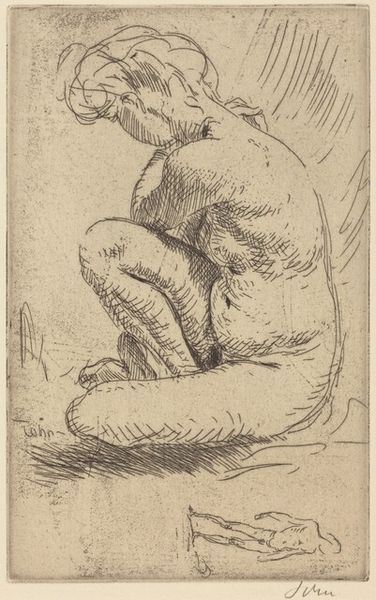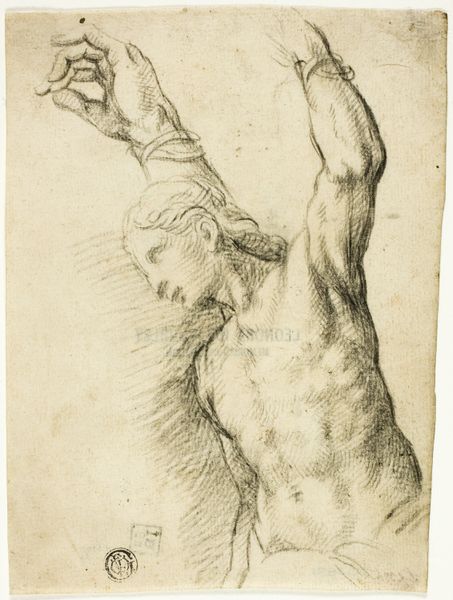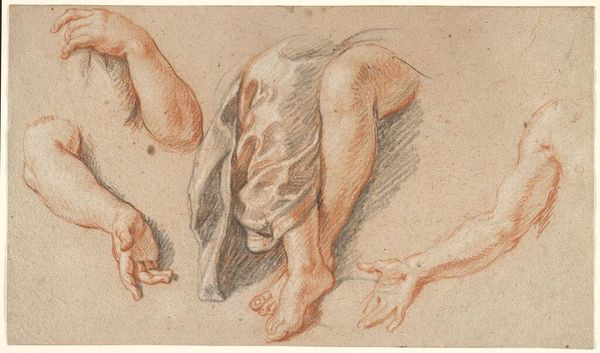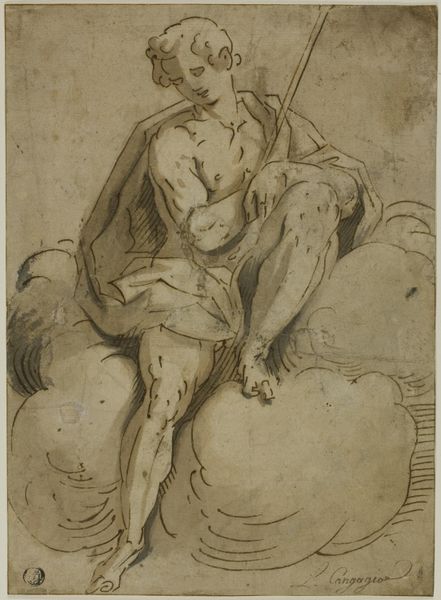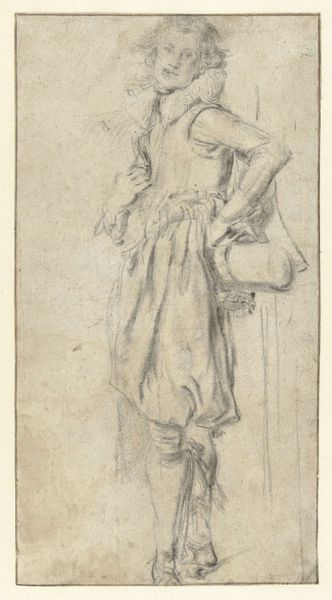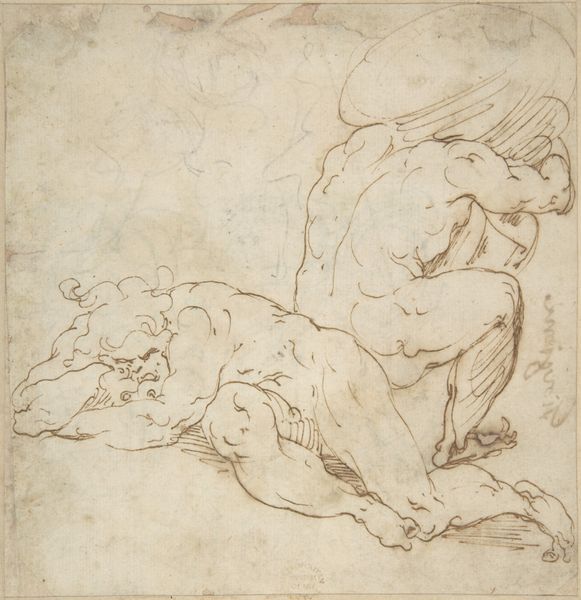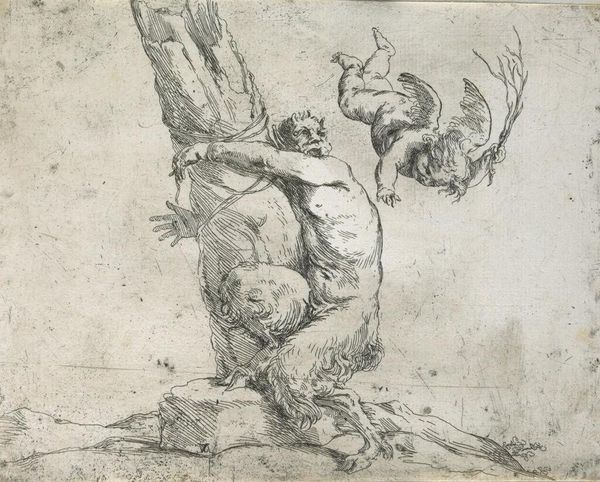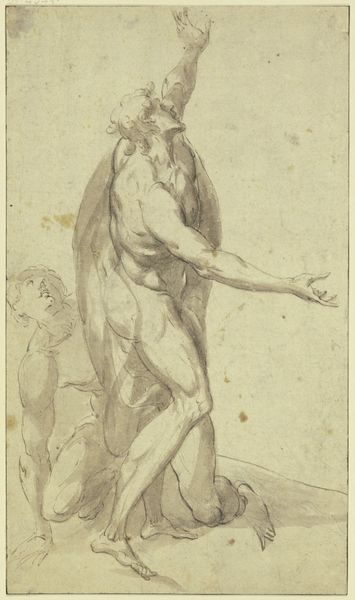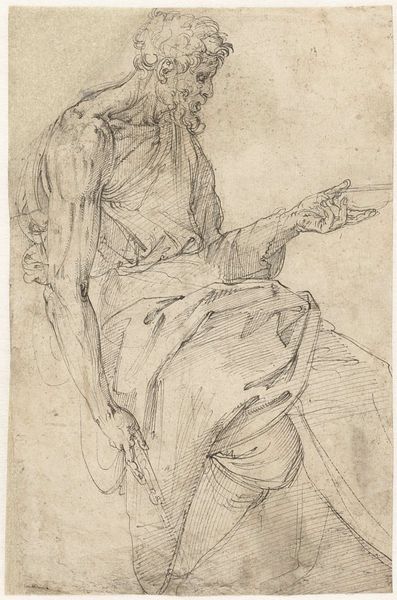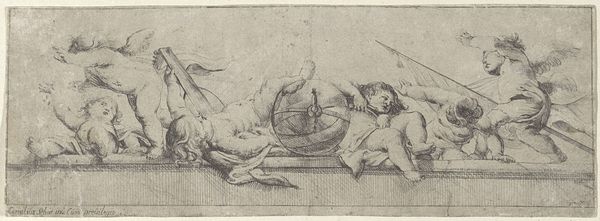
drawing, paper, ink
#
drawing
#
baroque
#
pencil sketch
#
paper
#
ink
#
genre-painting
#
nude
Dimensions: height 159 mm, width 155 mm
Copyright: Rijks Museum: Open Domain
Curator: Welcome. We’re standing before Jan de Bisschop’s “Half-Naked Boy with a Block of Wood,” created sometime between 1638 and 1671. The drawing, rendered in ink on paper, resides here at the Rijksmuseum. Editor: The figure strikes me immediately. There is something primal here. His posture suggests labour, perhaps even desperation, as if he is clinging to that wood. Curator: Indeed. Note the artist’s masterful use of line. See how the density of hatching describes form, especially the musculature of the boy’s back and arms. The light falls exquisitely, illuminating the curves of his body against the shadowed background. Editor: It also illuminates the symbolic weight of his half-draped clothing. We might interpret this as the remnants of civilization barely clinging to something almost feral. The wood itself—a rudimentary tool—further emphasizes this state. It suggests both burden and agency, a symbol, perhaps, of primitive potential. Curator: Perhaps. Structurally, consider how de Bisschop balances the composition. The boy’s outstretched arm guides our eye to the block of wood, the focal point, yet the overall distribution of mass is relatively even, contributing to a sense of stability. Note, also, how his other arm rests on some type of sphere... Editor: That sphere intrigues me. It's a symbolic platform. It positions this mundane scene within something greater, adding a layer of potential philosophical or moral commentary regarding labor. The image transforms this specific scene to one imbued with allegorical importance. The boy, perhaps, as unformed humanity confronting tangible, corporeal limitations. Curator: An intriguing interpretation. However, consider the drawing purely on its formal qualities, that interplay of light and shadow creates volume while the delicate lines add surface interest to an otherwise spare subject matter. The lack of strong contrasts allows for a visual softness which can be appreciated separate from considerations of historical contexts. Editor: Even divorced from context, this depiction transcends simple genre painting because these visual elements echo larger cultural narratives present within contemporaneous visual cultures. The symbolism lingers with modern audiences beyond discussions of technical aspects of image production alone! Curator: It is an undoubtedly affecting piece! Thank you for adding symbolic and historical insights alongside this demonstration of de Bisschop's line. Editor: Indeed, an image speaking as eloquently across time through the figure, in formal representation or visual language, as when first committed to paper.
Comments
No comments
Be the first to comment and join the conversation on the ultimate creative platform.
